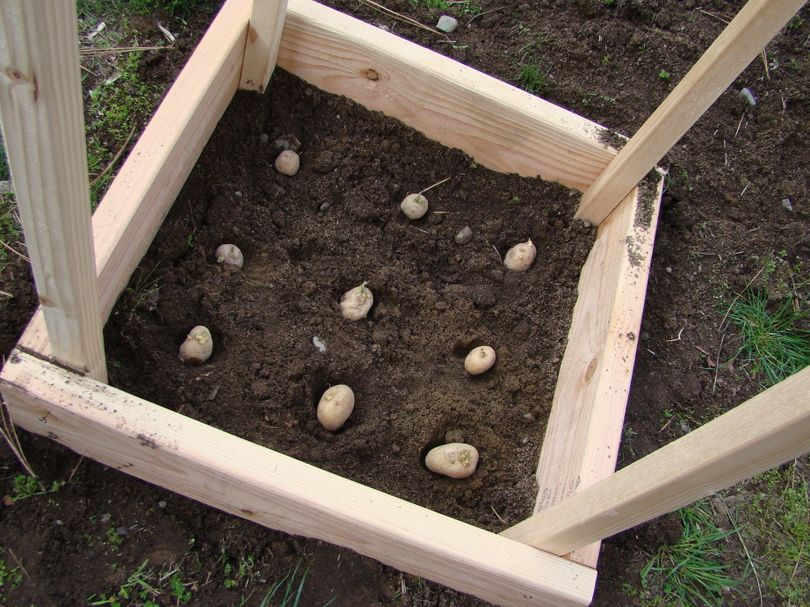Potato Box— April Urban Farm Challenge #2

When I saw a note about a potato box a few weeks ago, I immediately wanted to build one. My reference led me to a Seattle Times article published several years ago. The author claims that it is actually possible to grow 100 pounds of potatoes in a 2’ x 2’ box. Taking up so little space in the garden for such a great yield: I wasdetermined to give it a try this summer. Even if I only get half as many potatoes, the space saving will be worth it!
I found good box building instructions on Apartment Therapy, and followed their outline. The construction is simple, and you’ll be able to use it year after year (assuming the potatoes do grow). Upon further research, I found a version of the same concept from Sunset magazine.
The potato box works by growing potatoes vertically. Vertical growing (think cucumbers, beans, peas, squash) saves space and creates visual interest in the garden--two things I'm always looking to accomplish as I try my hand at my own version of urban farming.
Potatoes grow between the seed potato or start and the flowering plant. If you train potatoes to grow up, more potatoes will form along that root. The potato box concept is a build-as-it-grows box.
Starting with four corner posts (lengths of 2” x 2”) you add one row of 2” x 6” boards at the bottom of the posts, add seed potatoes (see photo above) and dirt to the level of the boards. When the plants form and grow to about 12”, add another layer of 2” x 6” boards and again add dirt to the level of the newly added boards, continuing until you have a box that is approximately 4 feet high. When the plants die back in the early fall you will (hopefully) have big, beautiful potatoes growing all through the box. To harvest, simply deconstruct the box from the top down, removing potatoes and dirt as you go.
There are a few pointers I discovered that are not in the Times article:
- Instead of filling the box with heavy dirt, mix in some non-seeding straw to lighten the fill. Four feet of dirt adds quite a bit of weight and your potatoes won’t be able to grow as well through the dirt.
- Not all potatoes will grow well in a box system. The Times article actually mentions Yukon Golds (a favorite in our garden) as a good variety for box growing, but further research revealed that Yukons will actually only ever grow in the first 6” of dirt, as they are an early potato variety. Look for late potato varieties--these are the potatoes that should grow well. I found a huge selection at Northwest Seed & Pet, including Yellow Finns, which are comparable to the Yukon Gold, but a late potato that should do well in the box. I’m glad I did more reading before building…I originally purchased Yukons and would have been thoroughly disappointed when they didn’t fill the box with a winter’s worth of potatoes.
- Choose the location of your box carefully. As it grows, it will shade part of your garden.
I’ll let you know how the growing goes at harvest time!
